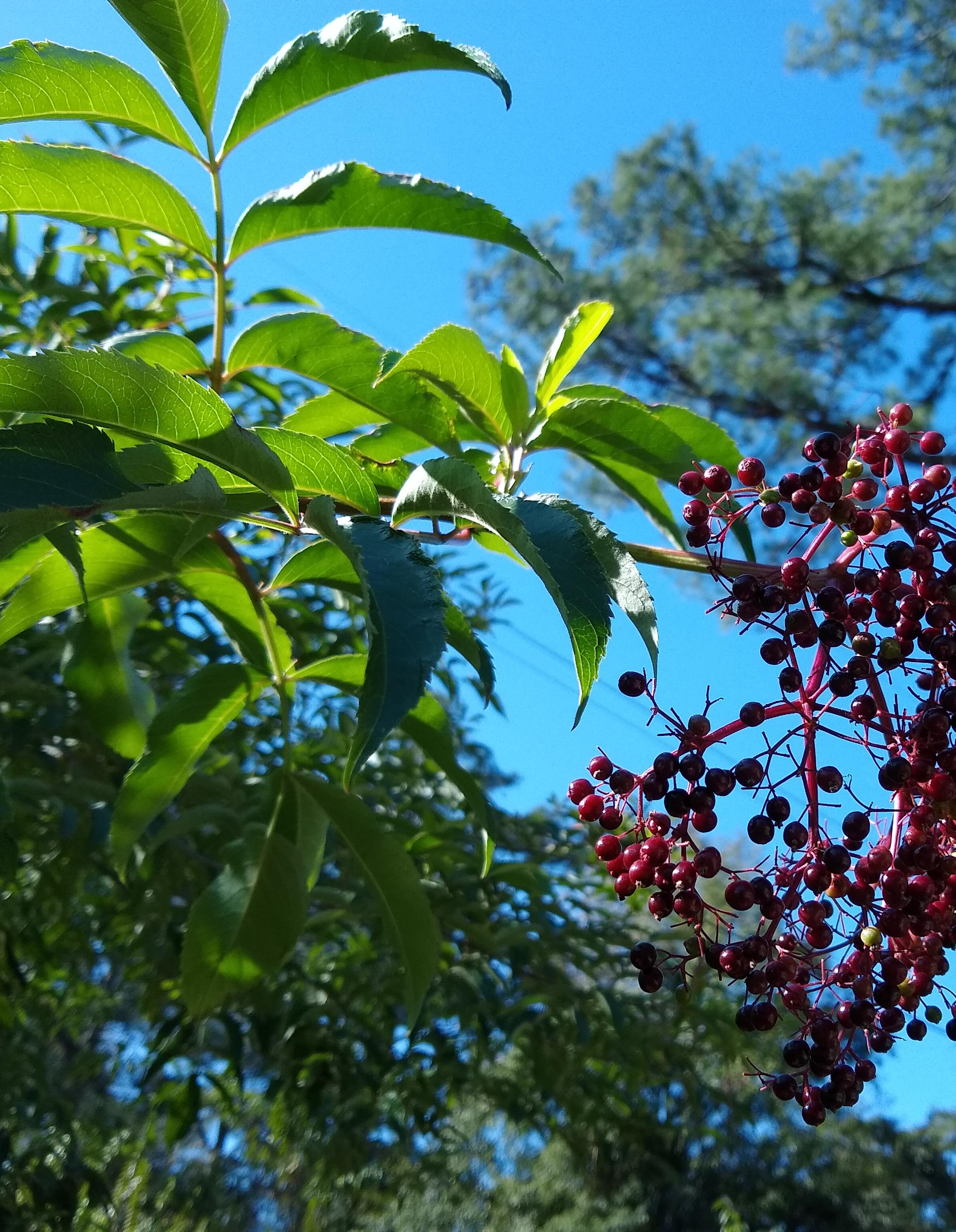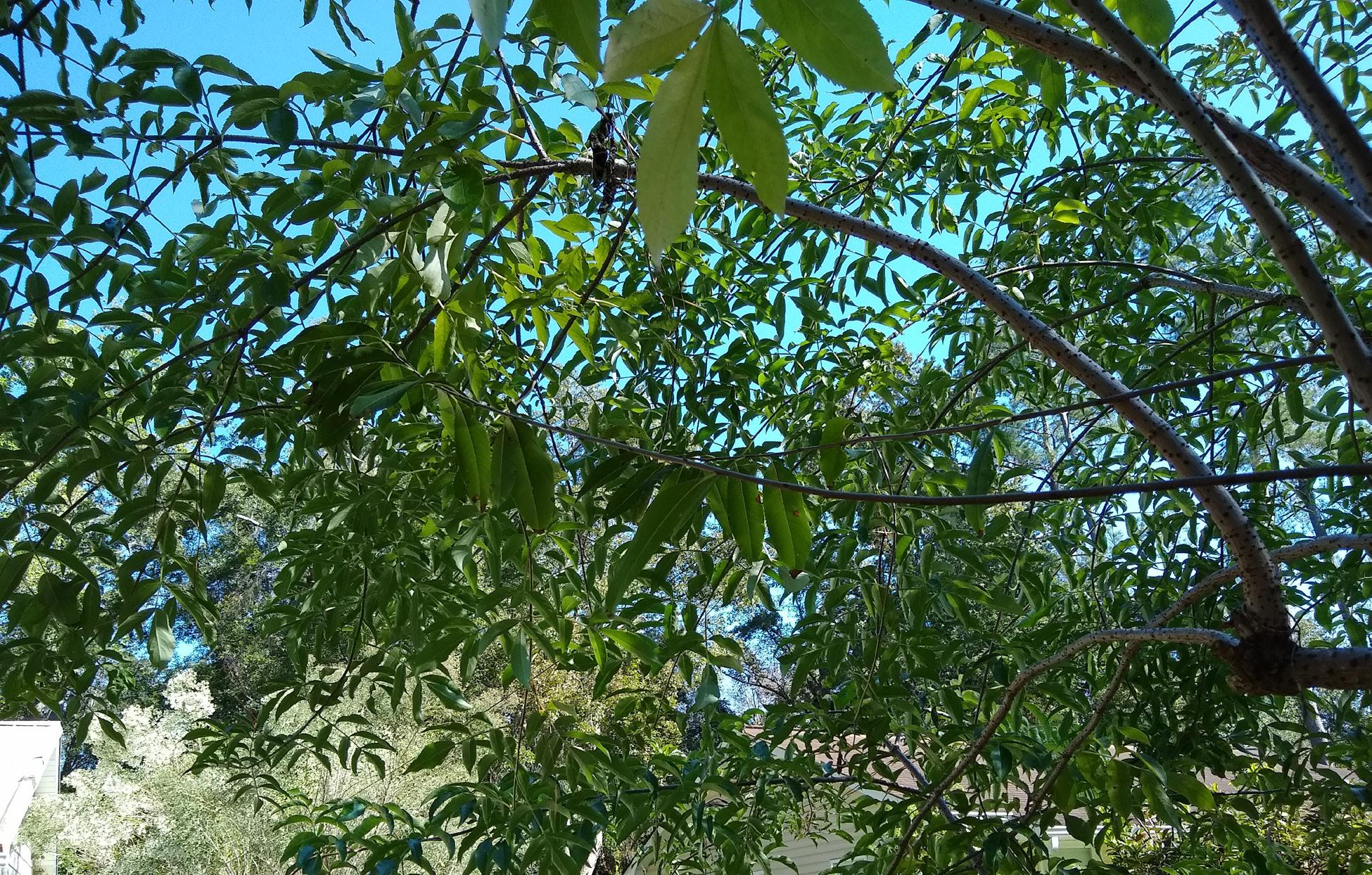
4 minute read
Native Plant Highlight: Elderberry Sambucus canadensis

Native Plant Highlight: Elderberry Sambucus canadensis
Advertisement
by Beth Wiggins Grant, Coast Plains Chapter, Georgia Native Plant Society
Perhaps you’ve seen juice, capsules, and gummies with elderberry concentrate in your local health food store or pharmacy. Elderberry is very high in antioxidants, Vitamins A, B, and C and iron, phosphorus, and potassium and both the numerous small flowers and juicy berries have been used in food and medicines for centuries. The plants, native to eastern North America, are one of the easiest large, upright, woody shrubs to grow in our Southern soils. Many wildlife use the plants for food. Pollinators like butterflies and bees consume their nectar, and over 50 species of songbirds and other animals eat the berries. Some mammals, such as deer, sometimes eat the leaves. Whether you are interested in human or wildlife consumption, or both, elderberry is a very useful deciduous shrub. They can be planted for shade, hedgerows and windbreaks, too.
They grow in clusters or small colonies, usually 6 to 8 feet wide, with multiple stems 8 to 12 feet tall, preferring moist, well drained soil in sun or part shade. They reproduce by underground runners, rhizomes and stolons, and by seed dispersed by animals. The flowers and fruit grow in large rounded clusters, or cymes, on the ends of the stalks. In bloom, the plant looks like a huge bouquet of flowers! They are found in open habitat, around swamp and stream margins, and along ditches and disturbed areas. In my yard, near a small creek, they came up on their own in several places.
The opposite pinnately compound 5 to 11 leaflets are dark green and 3 to 7 inches long. The flower and fruit clusters can be up to 8 inches wide.
The cream-colored flowers have a pleasant fragrance and can be dried or made into tea, juice, syrup, cordials, lemonade, or baked in pancakes, breads, and desserts. The dark purple/black berries can be used to make preserves, jellies, juice, wine, pies, syrup, and toppings for yogurt and ice cream, in baked goods, etc. It is no longer recommended to eat the blossoms or berries raw or any of the leaves raw or cooked (although this was common in past centuries), as they contain undesirable chemicals that can cause sickness. The leaves have been used for insect repellants and treatment for some fungal diseases in plants, like leaf spot and powdery mildew.
Propagation is very easy in the early spring. There is really no harm in taking samples from a wild source (if you have permission), as the plant will quickly send up new sprouts. As any new canes on a plant are clones, they may make larger fruit if two or more individual plants from different sources are planted. Dig some of the new sprouts coming up outside the main colony and hold them in water or wet soil until transplanted. For cuttings, cut a young cane, still springy but becoming woody, beginning to turn from green to brown. Cut it into pieces, 4 to 6 inches long, removing most of leaves, but careful to leave at least one set at the top. Root them in water which you change every few days, and mist the leaves at the same time. Roots will grow from the leaf nodes. Wait about two weeks until there is a thick root mass. Or put them in water for 12 to 24 hours then root them in damp soil in pots, with about 1/3 of the stem in the soil. Cover with a plastic bag to make a minigreenhouse. Water and mist every several days. These may root faster than those held in water. Gently pull the stem after about 10 days to check for significant resistance, which shows the roots are well developed. Plant 6 to 10 feet apart. Once in the ground, they grow fast! They require very little care and maintenance. Keep them watered the first year, as the roots are shallow. Mature plants can usually survive drought, but there may be some die-back. There will be some flowers and fruit the first year, but many more the second, when the canes are longer and there is more side growth. The production falls on third year stalks, so start pruning the older ones during the winter after the second year.

I have been very happy to have these interesting shrubs in my yard for many years, enjoying the fruits and watching the birds eat them. Now that the colonies are mature, the only care I give is heavy pruning during the winter after the leaves have fallen.

Credits
Gardening Know How. gardeningknowhow.com
Miller, James H. and Miller, Karl V. Forest Plants of the Southeast and their Wildlife Uses, The University of Georgia Press, 2005.
Photo by Beth Wiggins








